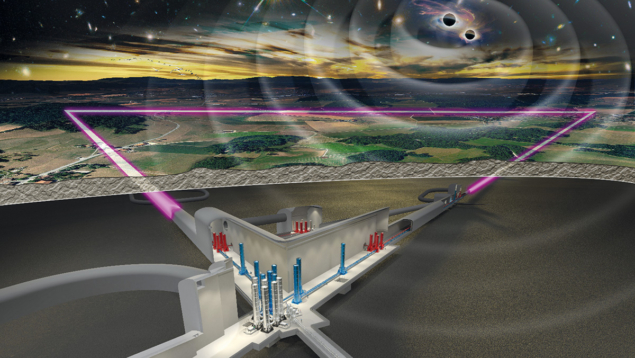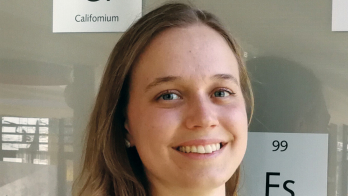
The Einstein Telescope (ET), a proposed third-generation gravitational-wave observatory in Europe with a much higher sensitivity than existing facilities, requires a new underground infrastructure in the form of a triangle with 10 km-long arms. At each corner a large cavern will host complex mirror assemblies that detect relative displacements as small as 10–22 m caused by momentary stretches and contractions of space–time. Access to the underground structure, which needs to be at a depth of between 200 and 300 m to mitigate environmental and seismic noise, will be provided by either vertical shafts or inclined tunnels. Currently there are two candidate sites for the ET: the Meuse–Rhine Euroregion and the Sardinia region in Italy, each with their own geology and environment.
CERN is already sharing its expertise in vacuum, materials, manufacturing and surface treatments with the gravitational-wave community. Beginning in 2022, a collaboration between CERN, Nikhef and INFN is exploring practical solutions for the ET vacuum tubes which, with a diameter of 1 to 1.2 m, would represent the largest ultrahigh vacuum systems ever built (CERN Courier September/October 2023 p45).
In September 2023, the ET study entered a further agreement with CERN to support the preparation of a site-independent technical design report. With civil-engineering costs representing a significant proportion of the overall implementation budget, detailed studies are needed to ensure a cost-efficient design and construction methodology. Supported financially by INFN, Nikhef and IFAE, CERN will provide technical assistance on how to optimise the tunnel placement, for example via software tools to generate geological profiles. Construction methodology and management of excavated materials, carbon footprint, environmental impact, and project cost and schedule, are other key aspects. CERN will also provide recommendations during the technical review of the associate documents that feed into the site selection.
“We are advising the ET study on how we managed similar design studies for colliders such as CLIC, ILC, the FCC and the HL-LHC upgrade,” explains John Osborne of CERN’s site and civil-engineering department. “CERN is acting as an impartial third party in the site-selection process.”
A decision on the most suitable ET site is expected in 2027, with construction beginning a few years later. “The collaboration with CERN represents an element of extreme value in the preparation phase of the ET project,” says ET civil-engineering team leader Maria Marsella. “CERN’s involvement will help to design the best infrastructure at any selected sites and to train the future generation of engineers who will have to face the construction of such a large underground research facility.”








